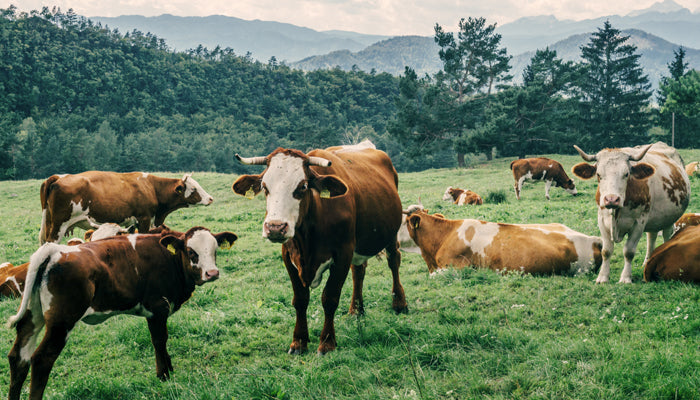Animal Products: Fundamental Responsibilities
At its core, the Paleo lifestyle is guided by 2 million years of human evolution. Whether we discuss nutrition, movement, or our interaction with nature, this pressure shapes our beliefs.

As a company in the Paleo sphere, we are also subject to market forces such as cost of ingredients, labor, marketing, and other expenses that go into running a business.
Some the largest costs are the ingredients. Whether we’re using almond flour, coconut oil, or egg whites, it takes more than a few teaspoons to make two thousand cookies in a batch.
Luckily though, pressure also makes diamonds. In the case of our ingredients, this pressure demonstrates our commitment to the high quality ingredients that make up a Paleo diet and makes for better products.
Today I’d like to focus on the animal products in our ingredients.
![]()
We use eggs, egg whites, and duck fat in our Treats. As you may know, the animal industry has been guided by market pressure far more than by evolutionary pressure, with the result that the vast majority of animal products on the market come from animals not living in their traditional, natural environments.
Thankfully, there are a few sources for animal products raised more in keeping with those environments, and Paleo Treats is proud to be partnering with the ASPCA (American Society for the Prevention of Cruelty to Animals) in the vanguard of food companies using animals responsibly for human consumption, starting with the eggs we use.

Let’s talk for a minute about two ideas surrounding animals for human consumption.
First, the conditions the animals are raised in. We believe that animals are healthiest when they live in environments that most closely reflect what they evolved to live in.
In the case of chickens it’s important that they not only have access to the outdoors but that they go outside. Often, a chicken farm will market their chickens as “having access to the outdoors” but the chickens in their care rarely use this access because it’s just a small door to an un-engaging dirt patch outside a massive barn.

It’s important that the chickens we get our eggs from see sunshine, have plenty of space to roam and peck for bugs, to scratch in the dirt and to have a healthy food source. For more on having chickens express their “chicken-ness”, please see Joel Salatin’s writings from Polyface Farms.
In this sense, our market forces contribute not just to our own high quality products but to creating a better food system that is healthier and kinder to animals.
Creating a better food system that is healthier and kinder to animals is a core value to Paleo Treats and that is why we only use cage-free eggs in our products. And we are going even further. By the end of 2018, all of our cage-free eggs will be from farms that achieve an animal welfare certification recognized by the ASPCA Shop With Your Heart program.
The second aspect of animals for human consumption is how much we humans need to consume.
We (Nik & Lee, co-owners of Paleo Treats) have been eating Paleo since 2009.

We’ve gone through the common phases of discovery, shifting to higher quality foods, attempting substitution, a focus on bacon, an excess of meat consumption, a shift to a mostly plant-based diet, and finally settled into a long term sustainable diet that we believe most closely mimics our ancestral eating habits.
Central to those habits is limiting the meat we eat. I know, I know. You think Paleo is a meat-centric diet. We’ve tried that both with ourselves and people we’ve advised, and found that for normal people (not Olympic athletes, Games-level Crossfitters, or ultra marathoners) meat is a small part of a healthy diet.
Our recommendation for meat consumption, if you decide to eat meat (and we do), is no single portion bigger than your palm, and as a regular pattern, meat in a meal only 3-5 times per week.

That is far less than the average American diet and definitely not in line with the popular conception of Paleo being a meat-centric diet. As Paleo experts who’ve lived it, advised hundreds of others on it, and thought deeply on the evolutionary patterns that support out health, this low frequency consumption is the obvious result.
Paleo Treats is proud to be leading this charge towards a healthier diet, planet, and living conditions for all sentient beings by partnering with the ASPCA for guidance on understanding what constitutes good animal welfare and committing to use only animal welfare certified animal products by the end of 2018.

We believe there is a sustainable path for for-profit companies using animal products to make a difference in animal welfare. We are committed to ingredients that satisfy our high bar for taste and our need to work within our evolutionary boundaries. Thank you so much for your support in this endeavor, we couldn’t do this without you.



Leave a comment